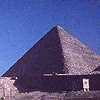

STONE AGE
BUILDING INDEX
STONE AGE
BUILDING
STANDING
STONES
NEWGRANGE
STONEHENGE
MALTA'S
MEGALITHIC
MARVELS
introduction
timeline
temple sites
ggantjia
hager qim
mnajdra
hypogeum
tarxien
magna mater
magna mater-myth
gallery
SKARA BRAE
HUNEBEDDEN
Timeline
The prehistory of the Maltese islands has been divided in phases, which are named for the different styles of ceramic wares excavated by archaeologists from various sites around the islands. The corresponding BCE dates which are in the table below, are calibrated radiocarbon dates (Renfrew 1972).
I know, they're boring, but than again, they just might give you that extra information which makes this site even more interesting! ;)
| PERIODS, PHASES & DATES | |||
| Period | Phase | Time BCE | |
| Bronze & Iron Age | Bahrija | 900-700 | |
| Borg in-Nadur | 1500 - 700 | ||
| Tarxien Cemetary | 2500 - 1500 | ||
| Temple Period | Tarxien | 3000 - 2500 | |
| Saflieni | 3300 - 3000 | ||
| Ggantija | 3600 - 3300 | ||
| Mgarr | 3800 - 3600 | ||
| Zebbug | 4100 - 3800 | ||
Well, that wasn't that bad, was it?
Let's move on and learn about what these periods stand for: The Zebbug phase ware with its different worked clay, and decorated pear shaped ceramics, was introduced to Malta by a new group of immigrants that followed the previous population from the pre-history. These new immigrants developed into an independent insular population which seems to have lived quietly for some 500 years – this included the next Mgarr phase.
Then, and we still do not know why, they suddenly started to construct Malta's Megalithic Marvels. During the Ggantija phase the first temples were built, and a lot of ceramic ware was decorated with a new technique – surface scraping of the ware, after firing.
The Saflieni phase followed that, and introduced new pottery styles and decorations. The apex of the temple culture was reached in the Tarxien phase. During these centuries many temples were built, refurbished and enlarged. Tarxien ceramics were richly decorated and many elaborate designs were used. At the end of this phase the temple culture mysteriously disappeared, and it seems that the islands were abandoned for some time.
Following an interval of some decades, the islands became populated again. These new people settled the islands during the Bronze & Iron phase. They cremated their dead and although these new people had a knowledge of metallurgy, in many respects their way of living was inferior to that of the people of the Tarxien period. Bronze age people in some cases used the ruins of the temples as cremation cemeteries. Architecturally the only remains connected with this period are the small megalithic structures known as 'dolmens'. These dolmens are very similar to some found in the south of Italy. The ceramics from this period are dull and unimpressive.
In the Borg in-Nadur phase we see the introduction of fortified villages, and the use of shallow storage pits dug out of the rock. Most of the ceramics of this phase have open forms and stand on a conical base.
The last period of Malta's prehistory is the Bahrija phase. This is not a 'real' phase, but represents a new culture that settled on the hill of Bahrija in Malta. These Iron Age people must have arrived from the South of Italy, and they shared the island with the people of Borg in-Nadur.
To give you an idea how much earlier the temples of Malta were build than other great building on earth like the pyramids and the Great Wall in China, here's another time table to enjoy:
| TIMELINE OF GREAT BUILDINGS THROUGH TIME | ||
| Picture | Date | Building |
 | c. 3600 BCE | Ggantija Temple, Malta |
 | c. 2530 BCE | Great Pyramid, Egypt |
 | c. 2000 BCE | Stonehenge, England |
 | c. 1700 BCE | Pallace of Knossos, Greece |
 | c. 600 BCE | Acropolis, Greece |
 | 214 CE | Great Wall, China |
 | 70 CE | Colosseum, Italy |
 | 563 CE | Hagia Sophia, Turkey |
NEWGRANGE STONEHENGE MALTA'S MEGALITHIC MARVELS SKARA BRAE
